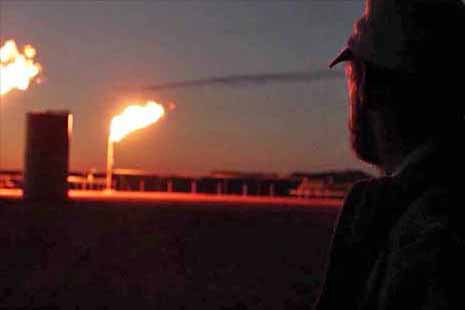New methane pollution standards signifies a major victory in the WORC network’s long fight to limit air pollution and waste by the oil and gas industry.
On May 12, the U.S. Environmental Protection Agency (EPA) released final standards to reduce methane air pollution, volatile organic compounds (VOCs) and toxic air emissions in the oil and natural gas industry. The standards are part of the Obama Administration’s efforts to lower methane emissions by the oil and gas industry by 40 to 45 percent from 2012 levels by 2025.
WORC supports new rules
“Today’s announcement represents one of the Obama Administration’s most important steps to protect Westerners from the health and climate impacts associated with oil and gas development, said Nancy Hartenhoff-Crooks, Chair of WORC. “This rule represents the first nationwide standard limiting methane pollution from the oil and gas industry.”
However, Hartenhoff-Crooks said the new standards alone are not enough to cut methane pollution.
“Urgent action must be taken to address the millions of tons of climate change causing methane and harmful air pollutants emitted by existing oil and gas development,” she said. “The President has committed to taking action to rein in emissions from existing sources, and we stand ready to work towards that goal as well.”
WORC comments
In December 2015, WORC submitted comments supporting the rules and asking for some key improvements. WORC’s comments focused on
- Limiting emissions from storage vessels, liquid unloading operations, and pneumatic devices and compressors,
- Increasing the frequency of leak inspections, and
- Providing a way for affected residents to participate in pollution detection and reporting.
More about the methane pollution rules
Methane, the key constituent of natural gas, is a potent greenhouse gas (GHG) with a long term global warming potential more than 25 times greater than that of carbon dioxide. Methane is the second most prevalent GHG emitted in the United States from human activities. Nearly one-third of those emissions comes from oil production and the production, transmission, and distribution of natural gas.
The standards will significantly curb methane emissions from new, reconstructed, and modified processes and equipment, along with reducing VOC emissions from sources not covered in the agency’s 2012 rules. These sources include hydraulically fractured oil wells, some of which can contain a large amount of gas along with oil, and equipment used across the industry that was not regulated in the 2012 rules.
EPA’s standard is expected to cut 510,000 short tons of methane in 2025, the equivalent of reducing 11 million metric tons of carbon dioxide. Recovered natural gas can be used on site or sold.
EPA estimates the rule will yield climate benefits of $690 million in 2025, which will outweigh estimated costs of $530 million in 2025.
The standards are expected to reduce 210,000 short tons of ozone-forming VOCs in 2025, along with 3,900 tons of air toxics, such as benzene, toluene, ethylbenzene and xylene. Ozone is linked to a variety of serious public health effects, including reduced lung function, asthma attacks, asthma development, emergency room visits and hospital admissions, and early death from respiratory and cardiovascular causes.
Air toxics are known or suspected to cause cancer and other serious health effects.
You can learn more about the EPA rules directly from the EPA here. You can also read the following blog on the rules authored by White House Climate Adviser Dan Utech.
Read more stories about oil and gas here.
Read more:
Colorado Oil and Gas Activists Hopeful, Despite Ballot Defeat
Fracking Cover-Up Continues Groundwater Contamination Disaster in Pavillion, Wyoming
WORC Files Injunction to Stop Secret Royalty Policy Committee Meetings


